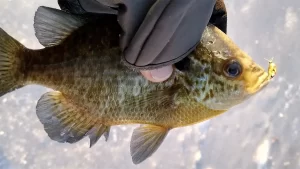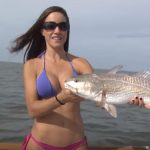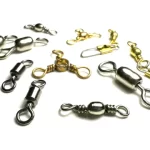Many anglers recall a humbling moment when a stranger outperformed them on the ice or in open water. Two particular instances stand out as defining moments in the pursuit of fishing and fly-tying expertise.
One memorable experience involved observing an angler pulling in crappie after crappie in a shallow back channel of a favorite lake. Using a pegged bobber with a dot-style ice jig tipped with spikes, the results were underwhelming. Curiosity led to a conversation about technique, and the angler shared his secret—a larva lace fly, fished entirely without bait. He called it “ice fishing naked.”
Initially perplexed by the term, a closer look revealed the fly in question, presented in two simple color combinations: orange over chartreuse and brown over green. The angler refrained from divulging how to create it but provided insights on how to fish it effectively. This sparked an obsession that led to countless hours perfecting the technique, igniting a passion for bait-free fishing.
Another transformative moment came after ice-out while fishing a small channel. An older fisherman, leaving with a limit of bluegills, shared his secret: a hand-tied yellow mousie fly made with balloon strips. Inspired, a quick stop at a tackle shop led to the purchase of a first fly-tying vice, launching a lifelong journey into the art of creating flies.

Why Consider Bait-Free Ice Fishing
While many anglers swear by bait or plastic tails, there’s something uniquely satisfying about catching fish without them. Bait-free techniques often lead to higher-quality catches, as finicky fish can be tempted by a natural-looking presentation. A fly or jig that mimics aquatic life tends to appeal more to selective species. Additionally, fishing without bait reduces the hassle of constant re-baiting, allowing for more time actively fishing.
For sight anglers, bait-free fishing reveals a deeper understanding of how fish react. It’s especially effective for targeting species like large bluegills and redear sunfish that might otherwise shy away from traditional bait.
Techniques for Bait-Free Success
Focus on Horizontal Presentation
A horizontal presentation is often key. Adjust the knot so the jig sits as horizontally as possible when twitched. This technique enhances the jig’s movement, making it more appealing to fish. Experiment with cadence and twitch rates to find what works best, using fish-finding technology to gauge their reactions.
Twitch and Lift
Drop the jig to the desired depth and use a subtle, continuous twitch while slowly raising the rod. This gradual movement often entices fish to strike. In shallow water, sight fishing can help fine-tune the presentation and improve success rates.
Detecting Bites
A reliable spring bobber is invaluable for detecting light bites. Spring bobbers made from lighter springs or loops of monofilament are excellent DIY options, while commercial products like St. Croix Super Finesse or Lite Byte Spring Bobbers provide high-quality alternatives.
For ultra-light jigs that may not register on flashers, use high-visibility line to watch for subtle movements. Adding a kink to the line helps detect strikes by observing changes as the jig moves.
Ideal Equipment
Flies and Jigs
Tungsten jigs and flies are game-changers due to their sensitivity and quicker sink rates. Brands like Jeff’s Jigs and Flies, Simcoe Bugs, Starky Flies, and 3 Brothers Flies offer excellent options. For a slower drop, consider lightweight, size 12 or smaller flies, such as larva lace patterns or summer nymphs wrapped with lead or a small brass bead.
Rod Selection
Panfish ice rods work well for this method. A 24-inch ultralight rod with a fast-action tip is ideal for windy conditions or confined spaces like an ice shelter. For hole hopping, a custom 5-foot ultralight rod provides extra reach, maximizing time in the water without constant reeling.
Best Locations for Bait-Free Ice Fishing
This technique excels in water less than 10-12 feet deep. Shallow, weedy flats or pockets in weed lines adjacent to deeper water are prime spots. Tungsten jigs can extend the technique’s range to slightly deeper waters, but the method truly shines in shallows where fish are more visible.
For those ready to try a rewarding challenge, consider fishing without bait. With practice and patience, this technique offers an exciting way to outsmart fish and achieve success on the ice.
Image/Source: Wired2Fish





